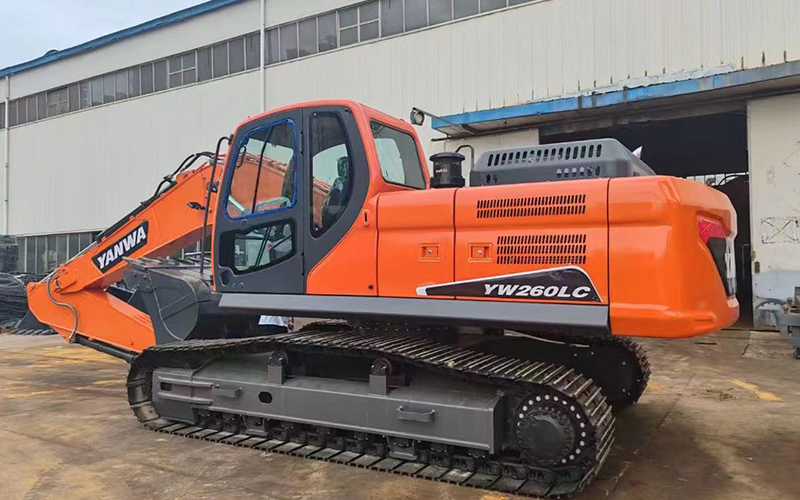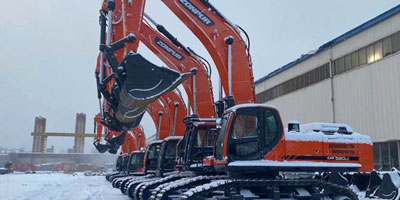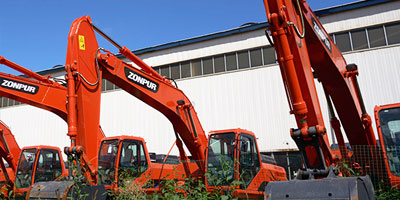Maintaining an excavator for optimal performance is essential to ensure its longevity,efficiency,and safety.Here’s a comprehensive guide to help you keep your excavator in top condition:
1.Daily Inspections
Check Fluid Levels:Inspect hydraulic fluid,engine oil,coolant,and fuel levels.Top up or replace as needed.
Inspect Belts and Hoses:Look for cracks,fraying,or leaks in belts,hoses,and connections.
Examine Tracks and Tires:Ensure tracks are properly tensioned and free of debris.For wheeled excavators,check tire pressure and tread.
Clean the Machine:Remove dirt,debris,and mud from the machine to prevent damage to components.
Check for Leaks:Inspect for hydraulic,oil,or coolant leaks under the machine.
2.Regular Maintenance Schedule
Oil Changes:Follow the manufacturer’s recommended schedule for engine oil and hydraulic fluid changes.
Filter Replacements:Replace air,fuel,and hydraulic filters regularly to maintain system efficiency.
Grease Moving Parts:Lubricate pivot points,pins,and bushings to reduce wear and tear.
Battery Maintenance:Check battery connections,charge levels,and electrolyte levels(if applicable).
Air Filter Cleaning:Clean or replace the air filter as needed,especially in dusty environments.
3.Hydraulic System Care
Monitor Hydraulic Fluid:Check for contamination or metal particles in the hydraulic fluid.
Inspect Hydraulic Cylinders:Look for leaks,dents,or scoring on cylinder rods.
Replace Hydraulic Seals:Replace worn or damaged seals to prevent leaks and maintain pressure.
4.Engine Maintenance
Check Coolant Levels:Ensure the coolant is at the correct level and free of contamination.
Inspect Belts and Pulleys:Look for wear or misalignment in the drive belts and pulleys.
Monitor Exhaust System:Check for leaks,cracks,or excessive smoke from the exhaust.
5.Track and Undercarriage Maintenance(for Crawler Excavators)
Track Tension:Adjust track tension to manufacturer specifications to prevent slippage or excessive wear.
Clean Tracks and Rollers:Remove mud,debris,and rocks from tracks and rollers to prevent damage.
Inspect Sprockets and Idlers:Check for wear and replace if necessary.
6.Electrical System Checks
Inspect Wiring:Look for frayed wires,loose connections,or corrosion.
Test Lights and Sensors:Ensure all lights,alarms,and sensors are functioning properly.
Check Battery Connections:Clean terminals and tighten connections to prevent power loss.
7.Operator Training
Proper Operation:Train operators to use the excavator correctly to avoid unnecessary wear and tear.
Avoid Overloading:Ensure the machine is not overloaded beyond its capacity.
Use Correct Techniques:Teach operators to dig,lift,and maneuver efficiently to reduce stress on components.
8.Environmental Considerations
Work in Suitable Conditions:Avoid operating in extreme temperatures or harsh environments without proper precautions.
Protect from Corrosion:Apply rust inhibitors and clean the machine after exposure to saltwater or corrosive materials.
9.Scheduled Professional Inspections
Annual or Biannual Inspections:Have a professional mechanic perform a thorough inspection and maintenance check.
Follow Manufacturer Guidelines:Adhere to the manufacturer’s recommended maintenance schedule and service intervals.
10.Record Keeping
Maintenance Logs:Keep detailed records of all maintenance activities,repairs,and fluid changes.
Monitor Performance:Track the machine’s performance over time to identify potential issues early.
By following these steps,you can ensure your excavator operates efficiently,reduces downtime,and extends its lifespan.Regular maintenance not only saves money on repairs but also enhances safety and productivity on the job site.



 +8613356922335
+8613356922335








